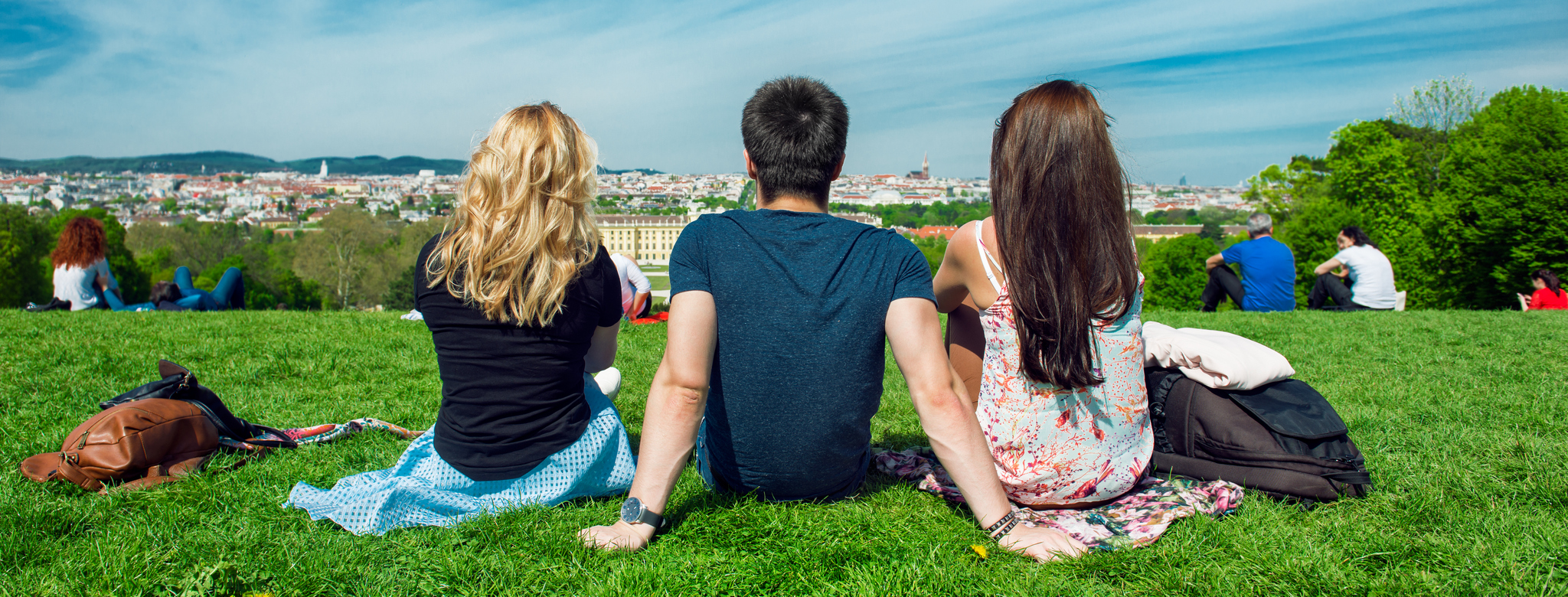It was researching the health benefits of urban community gardens in Denver in the US state of Colorado that set Professor Jill Litt on a path to sow nature’s feel-good factor in cities around the world.
Litt was struck by the way urban gardens, beyond promoting physical activity or healthy eating, were a gateway to feeling better generally. They helped people make new acquaintances and ease anxieties.
Contented chorus
‘It was as if people spoke from a script,’ said Litt, an associated researcher at the Barcelona Institute of Global Health, or ISGlobal, in Spain. ‘They always talked about the good feeling of getting their hands dirty in the soil, but also the feeling of respite from city life.’
She’s interested in how people connect with landscapes and whether such links can help prevent ill health. The successes that Litt observed with urban gardening led her to suspect a link between nature and the wellbeing of city dwellers.
‘Even in very urban, constructed environments they heard the birds, they felt the wind on their cheeks and in their hair and had the sensation of being at peace,’ she said.
Litt believes the aesthetic, physical and social aspects of such activities amplify people’s senses, have an emotional effect and improve their overall wellbeing.
She is putting her idea to the test in a research project that received EU funding to explore how activities in nature can tackle a root cause of ill health often overlooked by the medical profession and stigmatised by society: loneliness.
The project, called RECETAS, runs for five years through February 2026. Led by ISGlobal, the initiative involves partners from five EU countries – Austria, the Czech Republic, Finland, France and Spain – as well as the UK, Australia and Ecuador.
Loneliness is widespread in Europe, affecting people of all ages and backgrounds. In 2022, the first EU-wide survey on the subject found that 13% of respondents felt lonely most or all of the time during the preceding four weeks and 35% had the feeling at least some of the time.
While posing a risk to mental and physical health, loneliness is rarely addressed until after it causes damage that requires medical intervention.
Fresh air and friendships
In six cities – Barcelona, Marseille, Prague and Helsinki in the EU along with Cuenca in Ecuador and Melbourne in Australia – researchers are creating neighbourhood groups of people who get together in nature spots.
The people involved are considered by care professionals to be lonely and are referred by them to the RECETAS researchers, according to Litt.
The groups pick activities from a menu of local options such as an outing to a park or botanical garden, or a walk along the seacoast or a river.
“
Nature is the lubricant that gets people opening up.
An accompanying course is designed to help people spot signs and symptoms of loneliness and connect with others during the activities to help alleviate it.
The weekly sessions also involve a period of reflection – keeping a journal about time in nature, mindfulness or meditation.
‘Nature is the lubricant that gets people opening up,’ said Litt, who also works at the Department of Environmental Studies at the University of Colorado Boulder. ‘Even if they’re relatively quiet people, something about the group really helps. It’s extraordinarily beautiful to sit in on the groups and hear how much this is filling a void in people’s lives.’
A Czech postgraduate researcher named Blanka Novotná agrees.
Based at the Centre of Expertise in Longevity and Long-term Care at Charles University in Prague, Novotná said friendships formed in the project’s group there have helped at least one person through tough times.
She said a woman joined weeks after her husband died and was too emotional to speak in the first sessions. Then, during a woodland walk, another group member who had been bereaved gently assured the woman that time and nature would help her cope, providing welcome support.
Behind every group are social workers, health professionals, land planners and biologists focusing on the intersection between nature and mental health.
One of the experts also serves as group leader for an initial nine weeks, after which the aim is for it to continue on its own with the power of friendships that have been forged.
Green routes
Dr Tadhg MacIntyre, an environmental psychologist at Maynooth University in Ireland, said the Covid-19 pandemic and widespread lockdowns it triggered offered new insights into why people use green space and what they gain from it.
“
It was actually about connecting with neighbours, friends and family.
He said the motives were typically social interaction and mental wellbeing rather than physical activity.
‘People started to realise it was actually about connecting with neighbours, friends and family – or the chance to just sit under a tree, to enjoy being in nature and feeling its restorative powers,’ MacIntyre said.
He leads another EU-funded project examining how nature can help human health. Called GO GREEN ROUTES, the project got underway at the height of the pandemic in September 2020 and will run through August 2024.
In six urban centres – Burgas on Bulgaria’s Black Sea coast, Limerick in Ireland, Lahti in Finland, the Estonian capital Tallinn, Umeå in Sweden and Versailles outside the French capital Paris – the researchers are building or renovating parks and green spaces.
In Limerick the result is a 1.2-kilometre-long route across a suburb of the city. Local resident Dr Mark Lyons, who lectures on strength and conditioning at the University of Limerick, uses the new route for walking and running while his children go cycling and scooting on it.
‘It’s proved to be a much-needed link between local schools for people to walk and cycle away from the busy traffic,’ said Lyons. ‘Cyclists, walkers and runners alike can all use the route safely. A very broad demographic uses it, which is great to see.’
Community participation is an important aspect of the project. Locals share design ideas with the city and help to create the spaces.
Hands-on interaction with nature is built into the projects – including children’s play areas made of natural materials like logs for running along and woodchip pits for digging.
Virtuous circle
Time spent in nature not only benefits the mental and physical health of people but also represents a gain for the environment itself, according to MacIntyre.
He said that’s because the more people interact regularly with nature, the more they care for it and are likely to make lifestyle changes to reduce their environmental footprint.
Before becoming an environmental psychologist, MacIntyre was a sports psychologist and worked with professional athletes. In that field, time spent in nature – actively or passively – is considered an important aspect of treating stress.
MacIntyre has also been involved in research showing that reduced tree cover and high levels of noise pollution in cities can lead to higher levels of stress for residents.
In Lahti, GO GREEN ROUTES built a forest walkway at a medical centre to bring the benefits of nature to workers, patients and visitors. The boardwalk takes people on a route through the forest with areas for mindfulness, relaxation and social interaction.
It’s reminiscent of the Japanese idea of forest bathing, where the sights, sounds and smells of the woods are meant to aid relaxation.
‘By engaging citizens in the many different examples of the GO GREEN ROUTES, we are able to leverage benefits for their health and in the long term help the environment,’ said MacIntyre.
Research in this article was funded by the EU. The views of the interviewees don’t necessarily reflect those of the European Commission. If you liked this article, please consider sharing it on social media.


